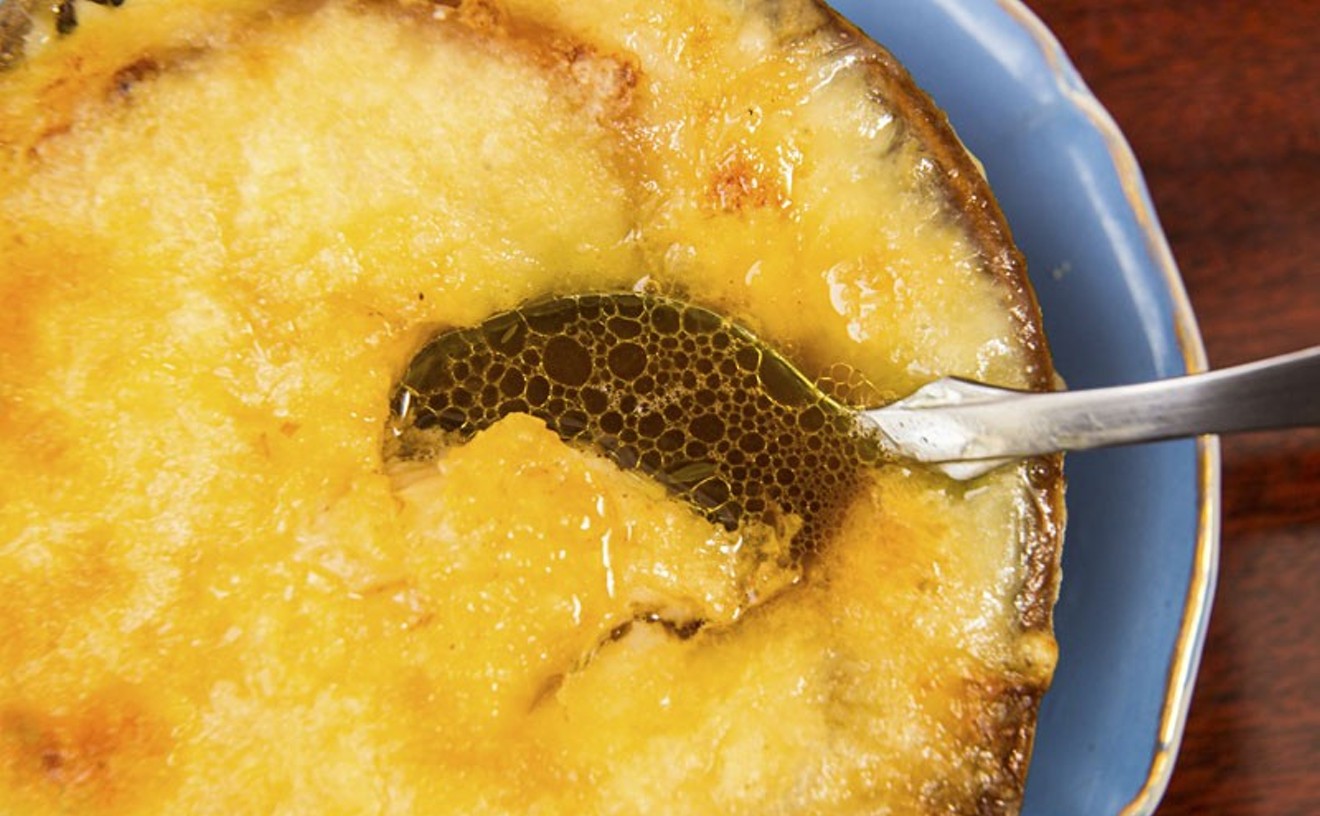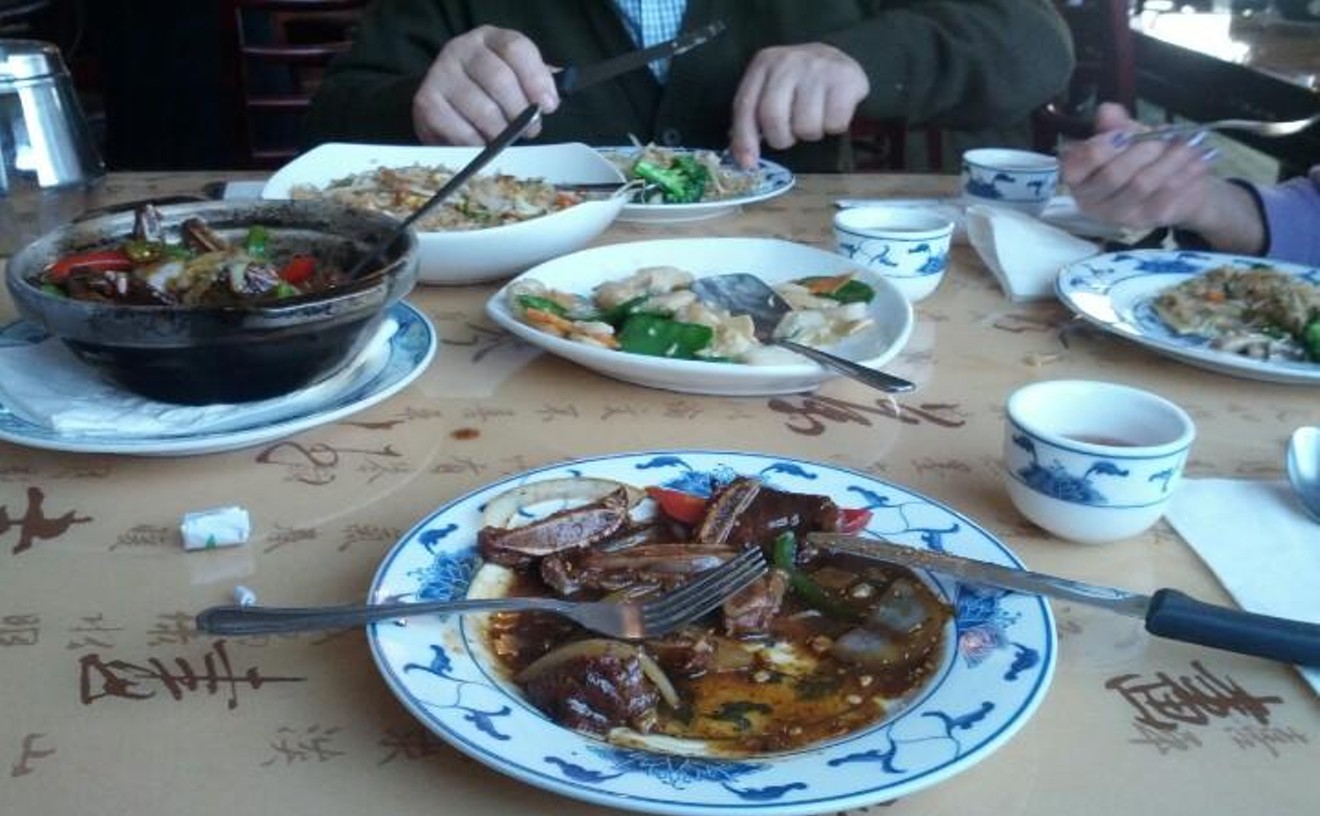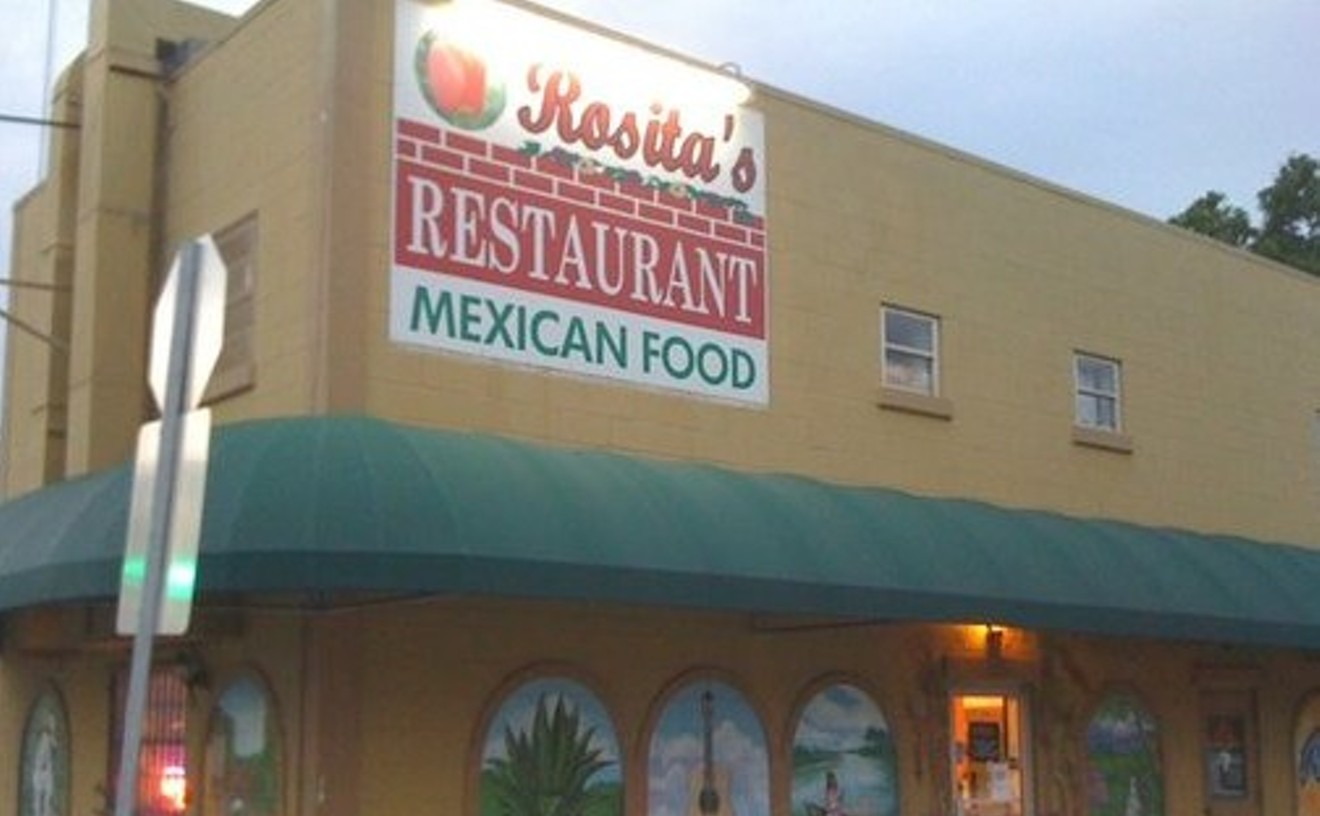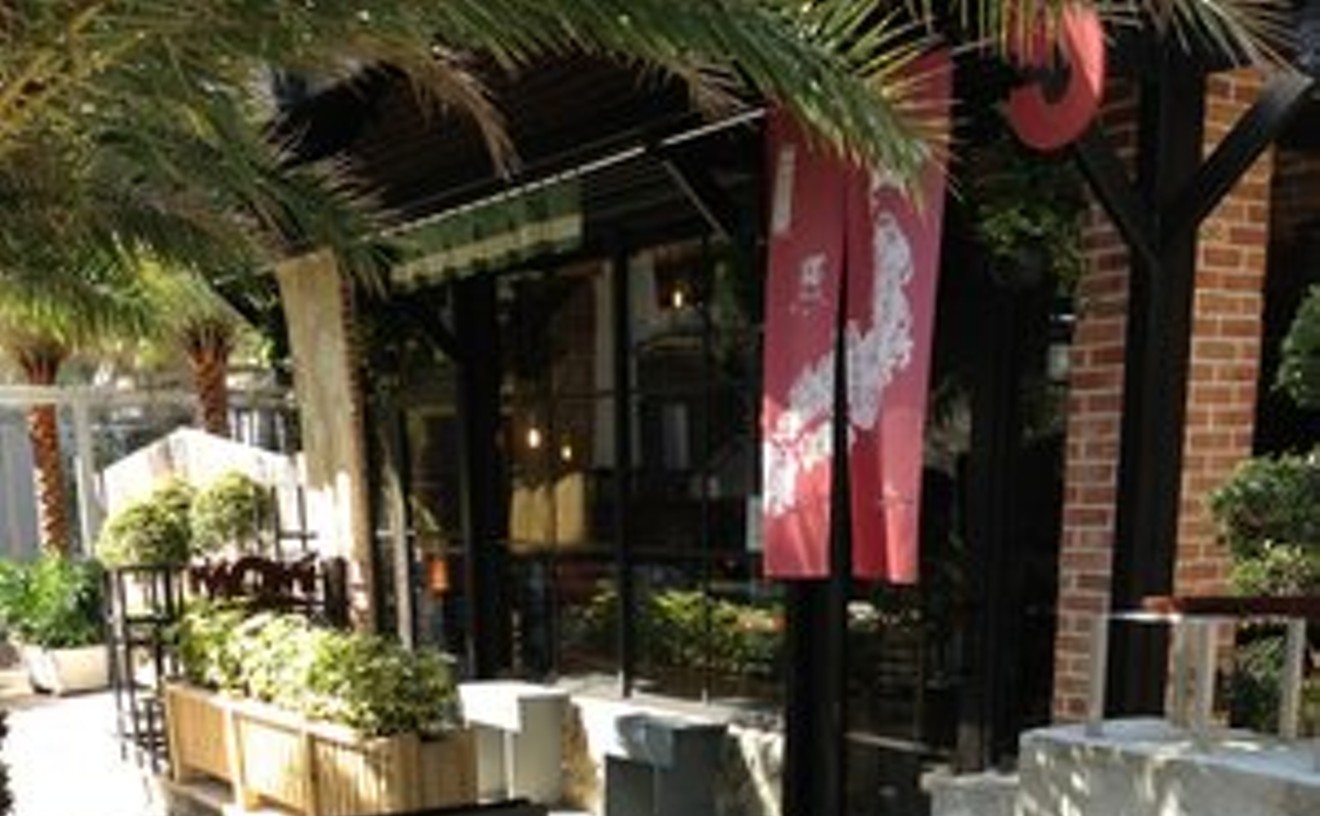If Momi Ramen were a house of worship, its altar would be the slab of pork belly atop the noodle house's communal wooden table. In this Brickell kitchen, massive kettles of tonkotsu broth — a silky, opaque liquid made with pork bones and gleaming globs of fat — bubble away and simmer for hours. They fill the restaurant with the pungent aroma of garlic and swine. There are noodles too. They are made daily by owner Jeffrey Chen and served smothered in broth. Bowls are in the $14 to $16 range at this late-night noodle house. Before Momi Ramen, Miami had few choices when it came to the Japanese noodle-and-broth soup. Now, this little shop proffers bowls that rival other ramen altars across the land.
Best French Restaurant
Frenchie's Diner

If there were a showdown of casual French cuisine, and restaurants around town were assessed according to their French onion soup ($7), Frenchie's Diner in Coral Gables would win for its perfect broth and bubbling, blistered layers of cheese. If the contest were to measure spots by their croque-monsieur ($10), Frenchie's would take the prize yet again — this time for its peerless ham sandwich smothered in béchamel and finished with golden, melted Gruyère. Similar outcomes would result from Frenchie's crème brûlée, steak frites, and duck confit ($26) — and perhaps also with its chocolate mousse, moules frites, and escargots. It might be easier to crown Frenchie's the most superb source for French cooking in town. But to rob these pretend judges of their glorious research, well, that just seems awfully cruel.
- 2618 Galiano St., Miami, 33134 Map
- 305-442-4554
- www.frenchiesdiner.com
Best Chinese Restaurant
King Palace Chinese BBQ

Finding good Chinese food in Miami-Dade is about as easy as finding a good driver. But in the area's small Chinatown in North Miami Beach, authentic chow can be had. When you enter King Palace Chinese BBQ, you'll know you've stumbled onto something special. You'll immediately see hanging roasted duck and barbecue roasted pork ($8.95 per pound) — a specialty that every Yelp reviewer and food blogger seems to rave about (and we agree). But the authenticity really seeps in with items such as boneless duck feet ($10.95), frog with garlic ($18.95), and duck tongues with spicy sauce ($14.95). But not to worry. For less adventuresome eaters, there are noodle bowls, stir-fries, fried rice, and other items that won't look back at you. But where's the fun in that?
- 330 NE 167th St., North Miami, 33162 Map
- 305-949-2339
- www.facebook.com/pages/King%20Palace%20Chinese%20Bar-B-Q%20Restaurant/111590982213750/
Best Chinese Take-Out, North
Mary Ann Bakery
Meat and bread. The simple combination is ubiquitous and delicious. After a step (all you get is one because the place is so small) inside Mary Ann Bakery, you're confronted by the sights and smells of the delight of dim sum: buns. For more than two decades, Karen and Emily Lim have been turning out sweet, eggy handheld treats filled with anything from barbecued pork to curried beef to bacon, onion, and cheese. None costs more than $1.50. Before you know it, that plan to "get just three" will turn into a dozen. The Lims' buns aren't limited to North Miami. If you're there early enough, you'll find employees from Asian markets all over town, even as far away as Lucky Oriental Mart in Sweetwater, grabbing their store's supply. The place is open 8:30 a.m. to 6 p.m. Monday through Saturday and 8:30 a.m. to 5 p.m. Sunday.
- 1284 NE 163rd St., North Miami, 33162 Map
- 305-945-0333
Best Chinese Take-Out, South
New Chinatown

Like so many things in Miami that are 25 or so years old (ancient!), New Chinatown recently underwent a face-lift. In 2007, the place was given a fresh coat of paint and an overhauled menu. To order the standard, run-of-the-mill Chinese take-out from here should be a felony. Go for the live Maine lobster "sun"-style ($45), with dried chilies, garlic, and onion. It's worth it. There's lamb in a spicy wine sauce ($19) and even ma po tofu ($12), a nuclear-hot Szechuan specialty with tofu and ground pork stew in a lava-hot sauce. The place is easy to find: It's the red barn-looking building with the Chinese characters on it.
- 5958 S. Dixie Highway, South Miami, 33143 Map
- 305-662-5649
Best Expensive Italian
Scarpetta

Call it an overdue win. But can you argue for any other place? At Scarpetta — Scott Conant's Miami Beach outpost at the Fontainebleau helmed by chef de cuisine Nina Compton — indulging in Italian cuisine comes at a steep price, but it's well worth it. The restaurant simply excels at serving clean flavors that aren't dumbed down for the American palate. The best example of this is the deceivingly simple spaghetti in a sauce of tomato and basil ($24). How could this be different from the canned stuff? One bite of the freshly made pasta covered in delectable red sauce, and "La Traviata" will echo in your mind. Another favorite is garganelli with English peas, pancetta, and a quail egg for extra richness ($28). But what is most surprising is that even after its 2008 opening and a changing of the kitchen guard in 2012, Scarpetta hasn't skipped a beat. It continues to serve Conant's greatest hits cooked to perfection. Charge it to the AmEx, Miami. This meal is worth it.
- 4441 Collins Ave., Miami Beach, 33140 Map
- 305-674-4660
- scarpettarestaurants.com
Best Inexpensive Italian
Salumeria 104

Salumeria 104 is more than you think. Sure, there's a selection of cheeses and cured meats, such as prosciutto di Parma and San Daniele, speck, guanciale, and soppressata at this midtown restaurant. And there are delectable antipasti and fresh pastas. There's vitello tonnato ($12) — thin slices of roast veal smothered in a creamy tuna sauce with fried capers — and homemade gnocchi alla romana ($14), sprinkled with Parmesan cheese and crisp prosciutto. Salumeria 104 has porchetta, roast quail, and grilled cuttlefish. In short, this joint isn't just salumi. Think of it more as a trattoria — the kind where you can get bread, wine, and cheese, as well as braised rabbit and sirloin steak. When you take a salumeria and add cooking worthy of a trattoria or ristorante, you get this exceptional, inexpensive Italian spot.
- 3451 NE First Ave., Miami, 33127 Map
- 305-424-9588
- www.salumeria104.com
Best Colombian Restaurant
Restaurante Monserrate

Arepas are to Colombian eateries as cubano sandwiches are to La Habana-inspired eateries: important enough that they'd damn well better represent, but far from the highlight of any legit menu. So, by all means, pop in to Restaurant Monserrate for the arepas — stuffed with queso blanco and perfectly tasty — but stay for the real treats: a feast of Colombian eats, from bandeja paisa (a massive plate packed with carne molida, rice, beans, maduros, and, yeah, one of those arepas) to mondongo, a traditional rice-and-tripe soup. Monserrate, which was founded in 1974, claims to be Miami's oldest Colombian eatery, and it still serves Dade's best dishes with flavors from Cali to Cartagena.
- 2093 Coral Way, Coral Gables, 33145 Map
- 305-856-8525
- www.restaurantemonserrate.com
Best Mexican Restaurant
Rosita's

Cruise south past the traffic-clogged vestiges of suburban sprawl, head west from the waning miles of Florida's Turnpike, and you'll cross into another Dade County. Neat rows of emerald tomato plants replace graffiti-tagged concrete. Tractors humming through palms pass by instead of Hummers blazing through stoplights. And filling your plate is home-cooked, underpriced Mexican food rather than canned salsa and overpriced, haute south-of-the-border fusion. No one does it better than Rosita's, a no-nonsense hole in the wall a few blocks southwest of the Turnpike's terminus. Everything on the menu costs less than $15, from a grease-free, piquant chile relleno ($9.50) to crisp sopes piled with veggies and chorizo ($1.75 each) to decadent pork ribs in chipotle sauce ($9.50). The map will tell you Rosita's is in Dade County, but it feels as far from Miami as Michoacán.
- 199 W. Palm Dr., Florida City, 33034 Map
- 305-246-3114
Best Brazilian Restaurant
Brazaviva Churrascaria

The gauchos of southern Brazil were the equivalent of North American cowboys: a nomadic people who resided in the vast plains of Rio Grande do Sol in the country's southern region. Like their brethren in Argentina and Uruguay, the gauchos would dig pits in the ground and start massive fires. Then they'd roast large pieces of delicious red meat on large wooden skewers. When the meats were ready, the gauchos would carve off thin slices and pass them around, often complementing the moist pieces of beef, pork, lamb, chicken, and sausage with seasonal roasted veggies from a recent harvest. Brazaviva Churrascaria in Doral continues the gaucho tradition seven days a week for Miamians in search of an affordable, mouthwatering Brazilian feast. Brazaviva offers 18 quality meats with an equal array of sides and salads at reasonable prices. Lunch is $22.99 a person, and a full rodizio meal costs $34.99 on weekends. Guests control the flow of their meats with green-red cards placed at their table. Flipping the green side up signals the carvers to begin serving. They bring out a continuous rotation of meats until you are satisfied or need a break. Flip the two-sided card to red to slow things down. To resume service, simply turn the card back to green. Brazaviva is open Monday through Thursday from 11:30 a.m. to 10 p.m. and till 11 p.m. Friday through Sunday. Just look for the burgundy canopy on a white office building.
- 7910 NW 25th St., Miami, 33122 Map
- 305-513-6373
- www.brazaviva.com






